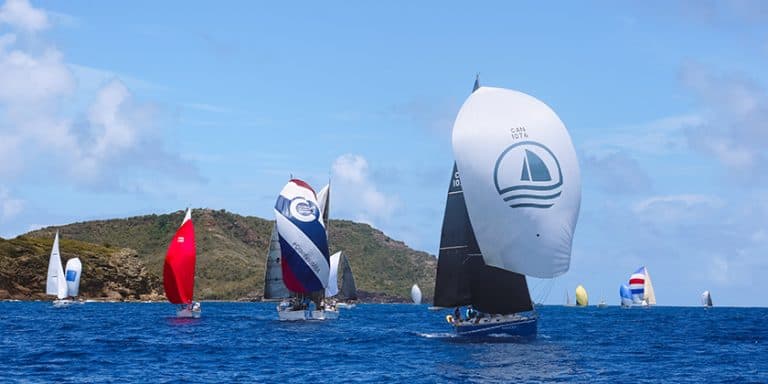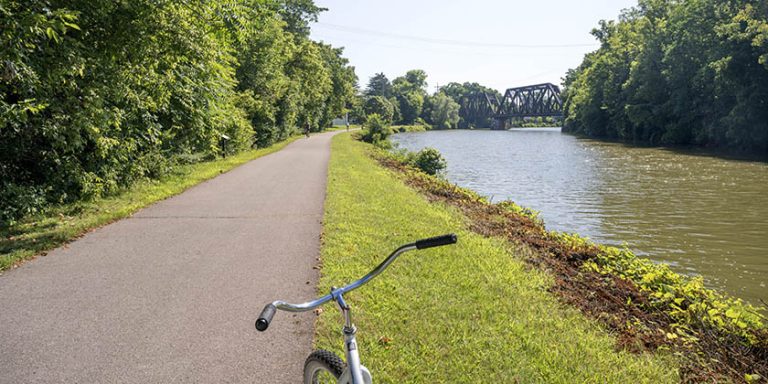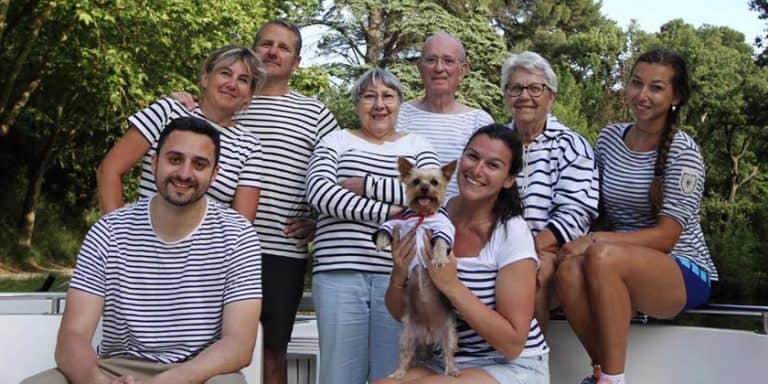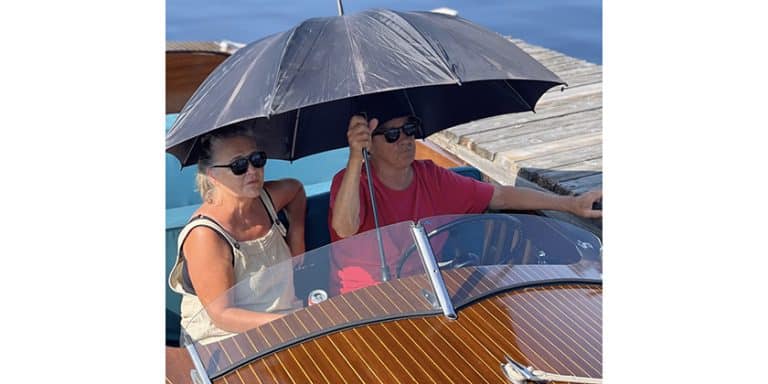Guadeloupe’s Northern Anchorages and the Rivière Salée
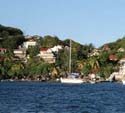
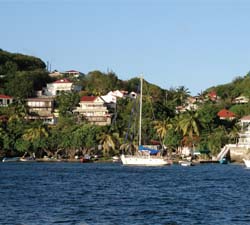 You wouldn’t exactly say that the French island of Guadeloupe in the Caribbean is “off the beaten path”. With a population of 406,000 and an area of 1,780 sq. km., it’s among the largest of the islands in the Leeward Islands. There is a major international airport there where thousands of tourists from around the world flood in daily to enjoy the sun and sea and French ambience.
You wouldn’t exactly say that the French island of Guadeloupe in the Caribbean is “off the beaten path”. With a population of 406,000 and an area of 1,780 sq. km., it’s among the largest of the islands in the Leeward Islands. There is a major international airport there where thousands of tourists from around the world flood in daily to enjoy the sun and sea and French ambience.
Several charter boat operators have bases here and long-term cruisers usually plan a stop when travelling up- or down-island to relax in one of the marinas, take advantage of the array of marine services available, and to stock up the ship’s larders with French goodies, namely fine French wines.
So why would a couple of cruising sailors looking for quiet rarely-visited places come here? It was by accident really. We were looking for a part for a boat improvement project and there are good chandleries to be found in Guadeloupe. You can also get duty-free diesel there when you clear out which is always good for the cruising budget. And okay, any opportunity to add a few good bottles of French wine to ‘the cellar’ on SV Distant Shores is always a draw for this crew.
Since Guadeloupe was more or less on our planned route south we thought we’d just make a quick stop there after exploring the islands of Saba and Montserrat (see the June 2009 issue of CY for more on that), do the chandleries, provision, top up the fuel, and go. But then we started doing a bit of research and talking to fellow cruisers, in particular French Canadian sailors who know the French islands well and feel at home there. French, of course, is the main language spoken in Guadeloupe.
So, as a result Paul and I discovered some of the most delightful and rarely visited cruising grounds in this popular Caribbean destination starting with the string of magical islets that lie off Guadeloupe’s north coast. We followed this with a unique “jungle cruise” down the Rivière Salée, a natural saltwater mangrove channel that divides Guadeloupe into two halves and is rich in exotic bird and plant life. And as if it wasn’t surprising enough to discover these gems amidst the touristic and industrial chaos present in Guadeloupe, we found yet another rarely visited cruising area here – Îles des Saintes (known to English-speaking sailors as The Saintes), the small islands that lie just off the southwest coast of Guadeloupe where we concluded our “off the beaten path” cruise. The Saintes are so utterly charming we could barely tear ourselves away. More about them in an upcoming next issue.
We arrived in Guadeloupe from Montserrat on April 18. Our destination was the small port of Deshaies (pronounced day-ay) on the northwest corner of Guadeloupe, one of three official ports-of-call. The other two are the capital city of Basse Terre and Pointe à Pitre, Guadeloupe’s main city where a large commercial port is located.
As I mentioned earlier, Guadeloupe is divided in two by the Rivière Salée so in reality Guadeloupe is two separate islands. On the chart, it looks like a lopsided butterfly. The “butterfly wing” or island on the west is called Basse Terre which means Low Land and is actually tall and mountainous. Grande Terre, which means Big Land, is the eastern wing of the butterly. It has low rolling hills, flat planes and is the smaller of the two. Just who was in charge of naming these islands anyway?
We sailed into the harbour at Deshaies in the late afternoon. Deshaies is a little fishing village that is slowly evolving into a popular waterfront destination with numerous wonderful yet casual French restaurants just a dinghy-ride away from where you drop the hook in the anchorage. We felt we had been transported back to Europe. The village was centred around the church with its tall steeple. The church bells tolled out 5 bells for 5 o’clock. French flags fluttered in the breeze. Guadeloupe is an overseas department of France so the same rules apply to yachts as if you are visiting Europe. If you are a non-EU flagged vessel and stay longer than 18 months you will be charged VAT for importing your boat. The currency here is Euros. There are no charges for clearing in.
After a delicious dinner ashore, a good night’s sleep, and fresh croissants for breakfast the next morning, we set sail for the north end of the island. As we left, a group of local sailors launched their traditional sailing sloops for the weekly Sunday race. Their colourful sails lent a festive air to our departure.
We sailed along the west coast of Basse Terre for the morning and arrived at Ilet à Fajou, one of the little uninhabited islands with quiet anchorages and isolated beaches lying off the north end of Guadeloupe. These islands are often overlooked by visiting sailors since you have to back-track here after clearing in, the navigation can be a bit tricky since there are shallows to avoid (our swing-keel Southerly 42 only draws 2′ 10” with the keel raised so not such a problem for us) but they are well marked and most sailors coming to Guadeloupe are ready for a break and want to enjoy the benefits of restaurants and comfortable marinas in the more populated areas. Fair enough. We look forward to that too.
Since it was the weekend, there were several groups of local power boaters rafted up together at Ilet à Fajou visiting with family and friends. It reminded us of summer weekends at home in Ontario on Georgian Bay and Lake Simcoe – just a bit more tropical! We had a lazy lunch at anchor and spent the afternoon swimming and reading. We could have spent a week here.
One by one the local boats departed for home and eventually we raised the hook too to begin our journey down the Rivière Salée. The entrance to this well-marked mangrove channel is only a short distance from Ilet à Fajou and as we wound our way along the curving waterway we saw flocks of egrets and other exotic birds. We felt miles from civilization but when we dropped the hook in the little anchorage we had marked for the night, we were just north of the Bridge l’Alliance and discovered we were also at the end of the runway of the international airport which gave us a shock a few times when planes landed!
To travel the Rivière Salée you must time your transit for two bridge openings. So not to disturb the busy traffic on the roads during the day, the bridges only open for boats Monday through Saturday at 0430 and 0520, the dark hours of the morning. This is another reason few sailors explore this area; but if you approach this as a fun navigational exercise, it is worth the effort to do the trip.
Our first bridge going south would be the nearby Bridge l’Alliance which was scheduled to open at 0430. We had been warned that if you are not standing by with lights on and engines running by 0420 the bridge attendant turns his car around and goes home! We and one other sailboat were there on time the next morning! To add to our enjoyment it was raining. I started to wonder if this was such a great idea.
But it really was fun to wind through the mangroves from light to light testing our abilities and getting familiar with this area that is also a good haven in hurricanes. Who knew? We might have to run here one day and deal with terrible conditions. This could just be a warm up.
Pont de Gabarre was the next bridge. It’s actually two bridges since there’s a pedestrian bridge as well, but since they open together, they are considered one bridge for timing purposes. We and our buddy southbound boat made the 0500 opening. Three sailboats were waiting on the other side ready to head north. They had cleared out and would continue on to the island of Antigua. We all shouted and waved. I think we were all happy to know we weren’t the only crazy ones out here having an adventure!
With the bridges behind us we were home free. Soon we began to see a glow on the eastern horizon. The rain stopped. We started to relax and enjoy the early morning sounds of life in the mangroves. The channel started to widen and soon we began to see city lights ahead. We were headed for Pointe à Pitre, Guadeloupe’s most important city and commercial port. By daylight we were passing large cranes and even larger on-coming ships and ferries. Was it the same day? The contrast was fantastic!
But that’s part of the fun. That’s why we love travelling by boat.

